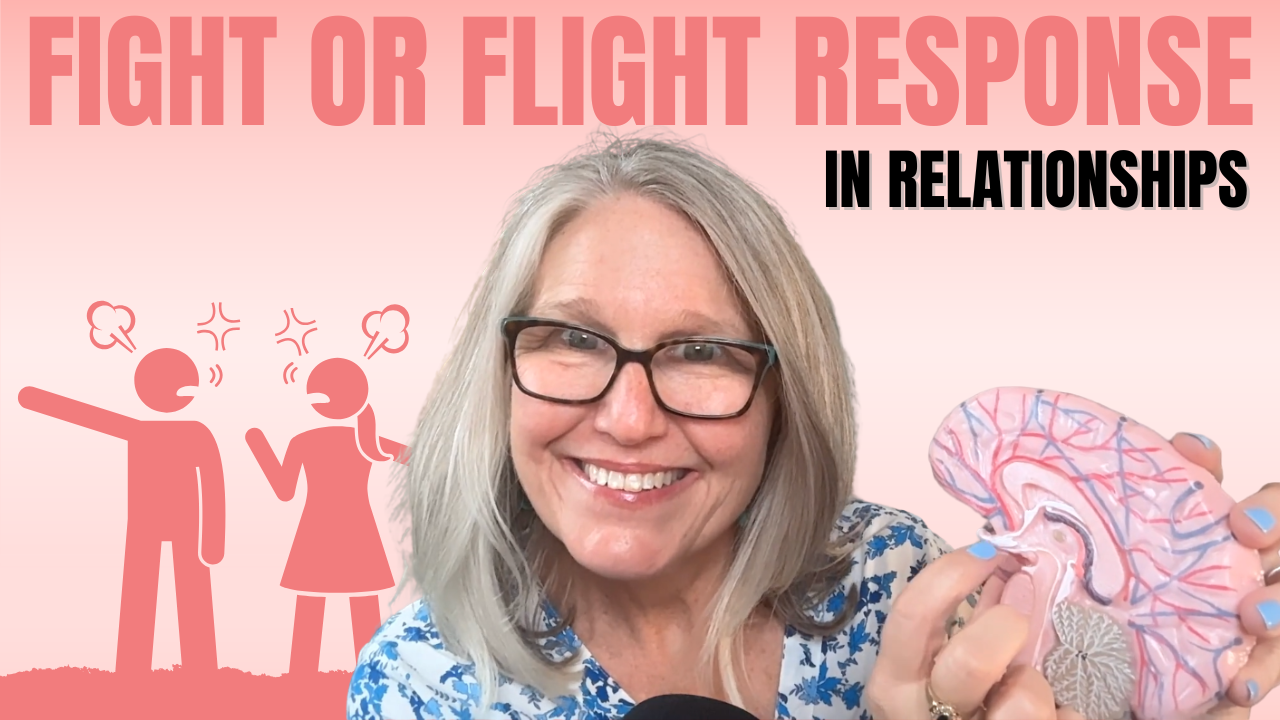🎥Watch the video version on YouTube Step 1: Notice What’s Happening in Your Body and Brain
The first step is simply awareness. When you feel yourself getting flooded—your heart pounding, your breath shortening—remind yourself: This is a stress response. My body thinks I’m in danger. It’s important to understand that calming down takes time. Hormones like adrenaline and cortisol don’t vanish with a deep breath. They usually take around 20 minutes to metabolize fully. This is where many couples get stuck. They pause for a moment and then dive right back in before their nervous systems have settled. Once you realize you’re triggered, step away from the conversation. Call a timeout, not to avoid the issue, but to allow your body and brain to return to baseline. Use that time intentionally. Focus on breathing, movement, nature, or anything that helps you slow your thoughts and release tension. You’re not just trying to calm your body—you’re training your brain to come back online. Remind yourself: “I’m safe. My partner isn’t the threat. We’re in this together.” And avoid ruminating or mentally preparing your next argument. That keeps you in fight-or-flight longer. When you’re both feeling calm and clear-headed (which might not be the same day), that’s the time to come back and talk. You don’t need to solve everything right away—just focus on reconnecting. There are two types of repair: Own your part in the argument. Even a simple, “I’m sorry for snapping” can go a long way. When you’re ready, go further. Explain not just what happened, but why it hit such a nerve. “When you pointed out the mess, I went straight into panic mode. I think it’s because I grew up in a chaotic home, and I felt helpless then. That mess didn’t just feel messy—it felt unsafe.” Most of our emotional triggers didn’t start in our current relationships. They often go back to childhood experiences where our safety or belonging felt at risk. When you understand your own triggers—and your partner’s—you can respond with compassion instead of defensiveness. Here’s the truth: You’re not broken, and neither is your partner. Your brains are just wired for survival, not long-term love. But once you understand what’s happening and why, you can make more conscious choices. This won’t eliminate conflict or prevent every fight. But it will help you recover more quickly, communicate more effectively, and stay connected—even when things get hard. Want more support? And if this article resonated with you, I’d love to hear from you. Leave a comment or let me know what else you’d like to learn about keeping your relationship strong. With warmth,Step 2: Take a Real Timeout—and Actually Soothe
Step 3: Reconnect When You’re Both Regulated
Basic Repair: Apologize and Take Ownership
Deeper Repair: Share the Root of the Trigger
It’s Nobody’s Fault—But It’s Everyone’s Responsibility
I created a printable list of self-soothing strategies to help you make your timeouts more effective. Grab it here.
Laura Silverstein, LCSW
Certified Couples Therapist & Author of Love Is an Action Verb

